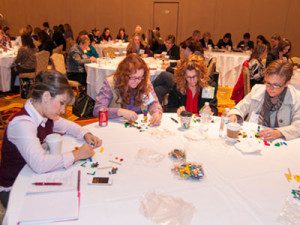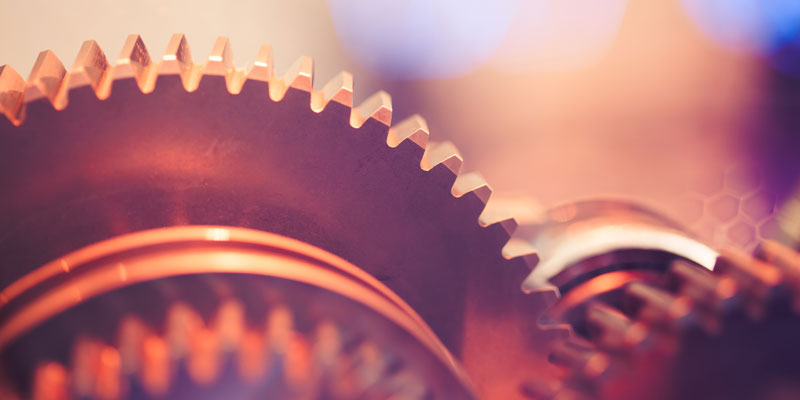Allison Grealis is Executive Director of Women in Manufacturing™, a national group with an aim of attracting and retaining women in the industrial sector and Vice President of Membership and Association Services of the Precision Metalforming Association (PMA), a full-service trade association representing the $113-billion metalforming industry of North America. Allison earned her Bachelor of Arts in English with a certificate in Women’s Studies from Ohio University and a Masters in Public Administration from the University of Akron.

“…Too often, people think that manufacturing is dirty, dark or dangerous. But manufacturing today is generally very high-tech and involves advanced technology and automation. It is much more about brains than brawn! We started Women in Manufacturing in order to dispel these negative stereotypes and demonstrate that manufacturing is a great sector for women…”
Please could you tell us a little about your career path to date?
I joined PMA in 2001. Since then, I’ve held a variety of positions including district, committee and division management, affinity partner relations, sponsorship sales, new product and service development, and member services. Now, I split my time between my responsibilities with PMA and serving as the executive director of Women in Manufacturing.
How did Women in Manufacturing come to be set up?
Women in Manufacturing (WiM) began in November 2009 with a small group of women Precision Metalforming Association (PMA) members who gathered at the FABTECH tradeshow in Chicago to discuss best practices, business conditions and women’s unique challenges and needs as minorities in the field.
What began as a small group of PMA members has grown into a strong, powerful network of women from across the manufacturing sector with what we think is a very important mission: supporting, retaining and advancing women in the manufacturing industry.
How many members do you have?
Today, WiM is nearly 500 members strong.
What sort of organisations do they come from?
Our members come from a wide array of industries from automotive and aerospace to oil and gas to medical devices.
What are the challenges for Women in Manufacturing members and how does the organisation help them to overcome these?

We started Women in Manufacturing in order to dispel these negative stereotypes and demonstrate that manufacturing is a great sector for women. We believe that networking and mentorship opportunities, in person and online , will help to attract and retain top-tier women in the manufacturing sector.
WiM members benefit from exclusive access to regional and national programming and networking opportunities with the largest event of each year being the annual WiM SUMMIT.
But we don’t stop at in-person events. Our support structure extends online with an active presence on Facebook and Twitter, a busy blog, and a dynamic website where we hold frequent professional development webinars and host online discussion communities. We also maintain a robust, searchable online directory and publish a quarterly e-newsletter, Impact.
Association Trends recently recognised our online efforts saying, WiM “has their community at the heart of their social media strategy at all times – supporting and connecting women in a male-dominated industry… They are about fostering connectedness and the visibility of their target constituents.”
Do you experience much resistance from male colleagues?
We typically get a favorable response from men in the manufacturing sector. In fact, we have often heard that our members were referred to our organisation by their male colleagues.
The US manufacturing sector today faces a significant challenge. There are many open jobs, but employers often struggle to find qualified workers. Men and women can agree that solving the problems related to the shortage of skilled workers is crucial to the future of manufacturing in this country and that these problems cannot be solved by only one-half of the workforce.
WiM is an inclusive organisation and our events are open to women and men who support them.
What sort of representation is there from equivalent membership organisations in different countries?
WiM is a national organisation in the US with members from all across the country. While we are certainly supportive of efforts to advance women in manufacturing around the world, we are focused on increasing the number of women in the American manufacturing sector.
Are things changing and school and college level as more girls are encouraged to study STEM related subjects?
This question gets to a major point about women in the manufacturing sector today. Problems actually start much earlier than the workforce. A 2011 Bayer survey attributed the disparity between young girls’ high math and science test scores and the lack of women in careers that require those same skills to persistent, negative stereotypes that keep women away.
At WiM, we are doing our part to encourage girls to pursue STEM. Young women, we believe, will best be attracted to STEM opportunities and manufacturing careers if they have ready access to role models with whom they identify.
How are toys like Goldiblox helping to change perceptions of girls about STEM?
We are pleased to see some companies evolving away from toys that reinforce traditional gender roles. We believe that when young girls are told that they can be anything – including scientists, engineers, welders and precision machinists – they will set their dreams and aspirations accordingly.
What is next for Women in Manufacturing?

http://www.womeninmanufacturing.org/home/
https://twitter.com/womeninmfg
https://www.facebook.com/WomeninMfg
http://www.linkedin.com/groups/Women-in-Manufacturing-4239561





